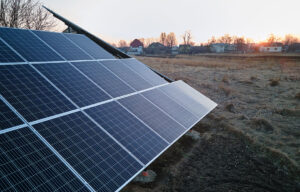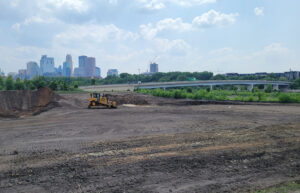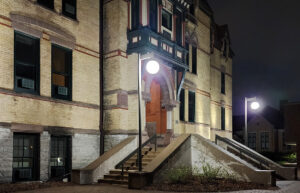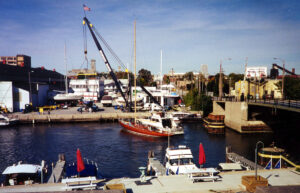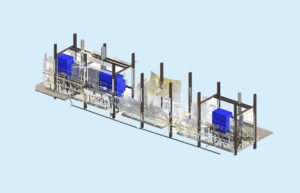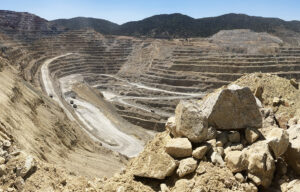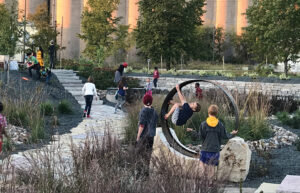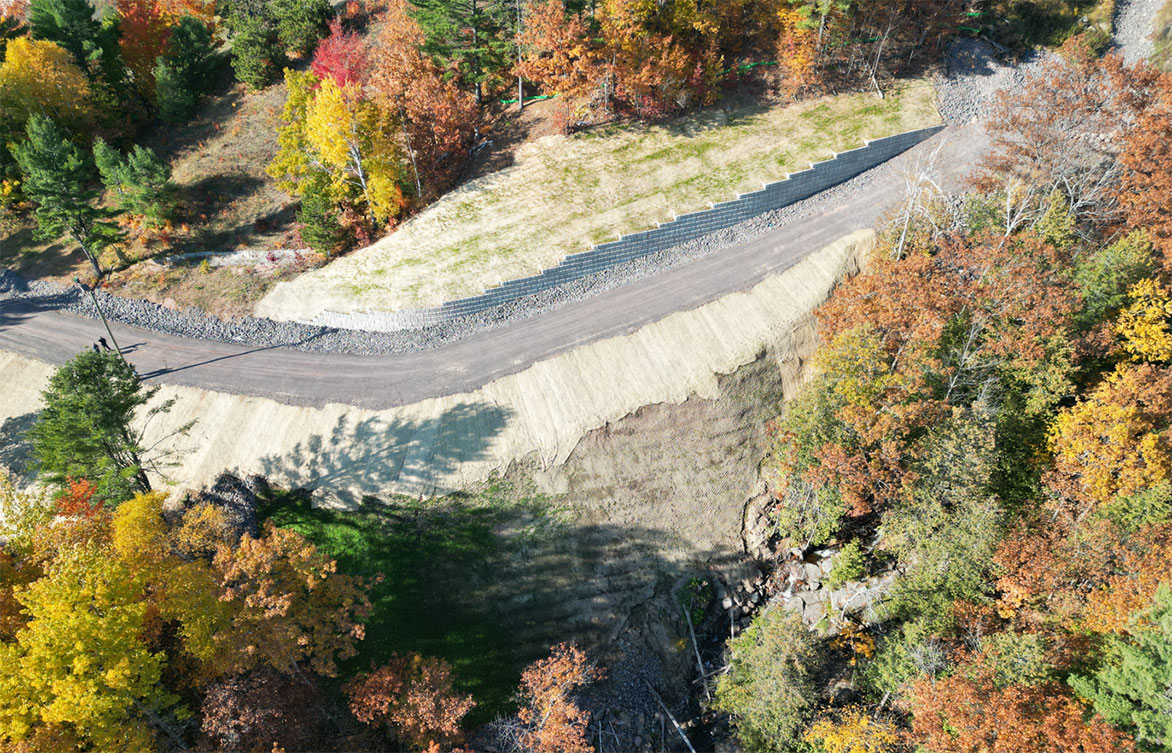
Slope repair puts solid ground under the skis
For nearly a century, Mont Ripley Ski Area has stood high above the Portage Canal, serving as a destination for skiers and snowboarders in Michigan’s Upper Peninsula.
Early on the morning of June 17, 2018, a severe rainstorm moved through the communities of Hancock and Houghton, dropping up to seven inches of rain on the area. The storm, later named the Father’s Day Flood, caused a concentrated flow in Ripley Creek, scouring the hillside on the western edge of the ski area. Simultaneously, a culvert became clogged with debris, creating a dam that redirected a torrent of water carrying tons of soil and rock down the slope and into the valley. Left behind was a severely eroded hillside, including slope failures at two sites and a severely damaged Deer Track Trail, one of Mont Ripley’s only hills for beginning skiers.
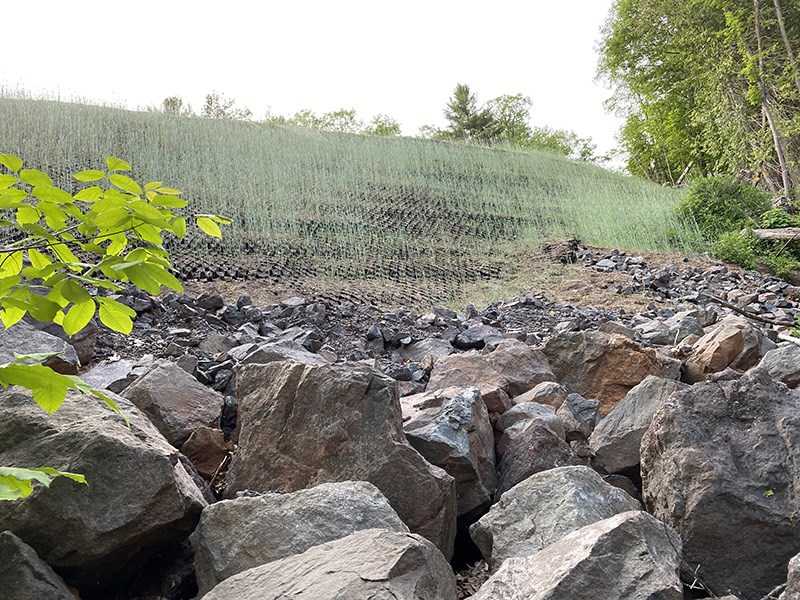
Michigan Technological University, which owns the ski area, wanted to restore the impaired slopes to their previous condition as well as reduce the risk of additional slope failures and potential downstream impacts in a future storm event. With partial funding from the Federal Emergency Management Agency, Michigan Tech hired Barr to provide a slope-stabilization design to withstand a 500-year rainfall event.
Barr performed a geotechnical investigation, slope-stability evaluation, and concept-level remediation design for the two slope-failure sites and the incised Ripley Creek channel.
We started with a geotechnical investigation that required extra measures to access the vast, steeply sloped project area. The results informed a restoration design that included placement of armoring stone at Powderstash Ravine, another ski run, to manage future flows. The reinforced-soil slope 80 feet above the base of Ripley Creek includes high-capacity geogrid with a Geoweb facing to promote long-term stability of the slope face. Armor stone protects the slope from erosive action of Ripley Creek, and a modular-block gravity wall on the upslope side of the trail allows passage of skiers and snow-grooming equipment.

Construction of the three damaged areas was completed in fall 2022, and skiers returned to the three repaired ski runs last season.
To learn more about Barr’s slope-stabilization and design services, contact our team.
About the author
Travis Davidsavor, vice president, senior geotechnical engineer, leads projects involving geotechnical design, field exploration and advanced in-situ testing, geotechnical investigations, slope-stability analysis and slope-failure mitigation, construction and blast vibrations, and instrumentation and monitoring. He is also an adjunct faculty member at the University of Minnesota Duluth’s Civil Engineering Department, where he teaches advanced geotechnical design.


